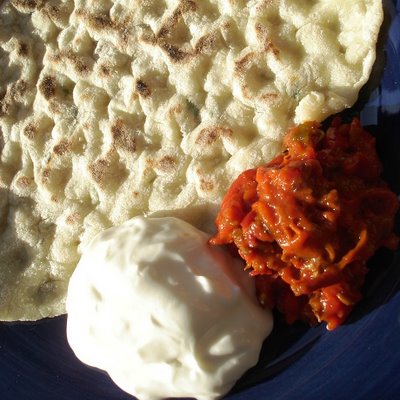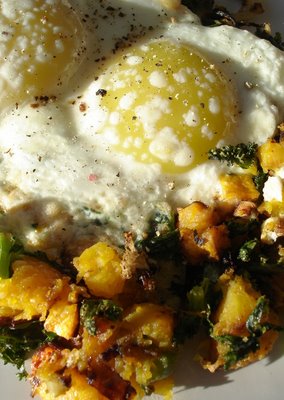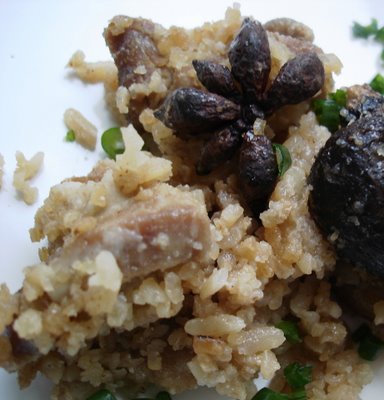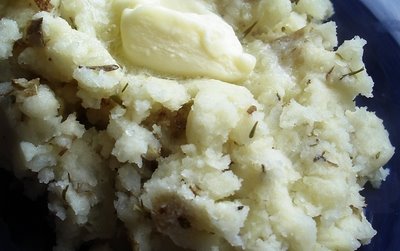
My usual tactic is to get rid of things I don't use, so I hadn't planned on participating in the Neglected Gadgets episode. Then, with some leftover
mashed potatoes in the fridge, I spotted my mom's
lefse rolling pin - something I don't generally think of as a kitchen implement, but more as a supporting structure in my family's culinary architecture. And I had not made lefse for ages. (You can buy lefse locally at specialty grocery stores or at the farmer's market, outrageously priced even for frozen lefse. And they are rather thin and pale - I like it a bit thicker, with a good browned flour char.)
This is one of those dishes I always make without a recipe, but I looked through my cookbooks none the less. Could have sworn there was a lefse recipe in our family reunion cookbook, but couldn't find it - then figured that most of us would think it was too simple for a recipe anyway. I did find two recipes in a collection from Whispering Pines Place, a lodge in Canwood, SK where my great grandmother used to live. One of the recipes called for eggs and baking powder, which I though quite odd - more of a potato pancake recipe, though it would be nice and tender and need less flour. The other recipe is written as a poem that starts with
Yew tak yust ten big potatoes...probably politically incorrect to copy the whole thing. I ended up calling my mom about it. Leftover mashed potatoes (we always made them with milk), flour, salt, nothing more - you don't want potatoes made with too much milk, because then you have to add more and more flour.
I kneaded about
1 cup of flour (by 1/3 cups) into about
two and a half cups mashed potatoes warmed to room temperature, til the dough was smooth and held together. After letting the dough sit for about ten minutes, I used the lefse rolling pin to shape lefse that would fit my 8 inch cast iron pan, using lots of
flour and turning them so that the dough would not stick - a lefse rolling pin is a royal pain to clean if dough is sticking in the grooves. I then browned them on both sides in a dry frying pan over medium high heat. The generous amount of flour prevents the lefse from sticking to the pan as long as you don't burn them. The garlic and goat cheese from the original mashed potato recipe came through but not as strongly as I'd hoped, so I would try using less flour next time. I at first thought the mashed potatoes had plenty of
salt, but ended up adding some to the dough after tasting the first cooked lefse. I ate these very untraditionally, with chunky harissa and sour cream and roasted eggplant. We always ate them at home just with butter, and sometimes sugar and cinnamon.
Anyway, I am happy that this edition of Weekend Cookbook Challenge led to my rediscovery of the lefse rolling pin. I am going to use it to give some surface texture to my latest favourite blog recipe, Nic's
wheat crackers.
This episode of
Weekend Cookbook Challenge is brought to you by Mary of
The Sour Dough and Sara of
i like to cook.
 Here is episode two in this week's rice theme. Rice with tea is as natural as cereal and milk, and good for mornings when you want something less filling. All you really need is rice and green tea, but use a garnish if possible. I had some sheets of nori and tiny dried shrimp, but you could use things like furikake or gomashio or just sesame seeds.
Here is episode two in this week's rice theme. Rice with tea is as natural as cereal and milk, and good for mornings when you want something less filling. All you really need is rice and green tea, but use a garnish if possible. I had some sheets of nori and tiny dried shrimp, but you could use things like furikake or gomashio or just sesame seeds.










